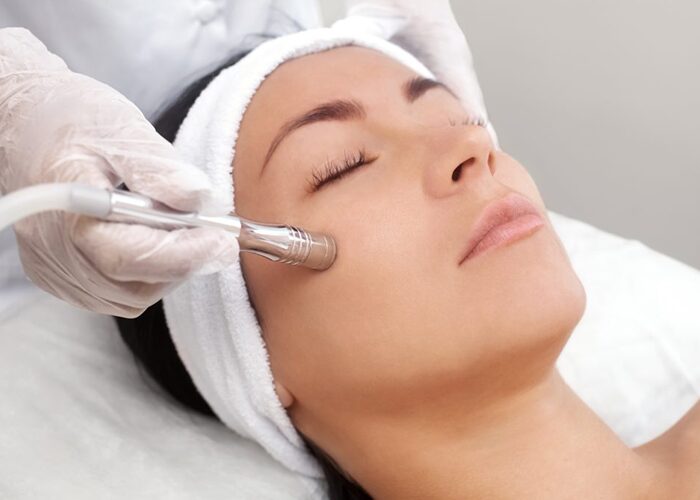Breast augmentation has one of the highest satisfaction rates among cosmetic procedures. However, some women are not pleased with the outcome of their augmentation for one reason or the other. Luckily, skilled plastic surgeons can perform a secondary procedure – known as a breast revision – in order to correct or adjust the results of a previous breast enhancement surgery. When considering breast revision surgery, plastic surgeons start by diagnosing the problem, which means focusing on the cause of dissatisfaction. Once this is done, the surgeon will create an appropriate revision plan to meet your needs and desires. The majority of women who receive a revision breast surgery find that they feel happier and more positive.

Revision breast augmentation surgery tends to be more complicated than the initial procedure, typically because there may be less skin and breast tissue available. More so, a certain amount of trauma is already inflicted on the surrounding muscle and supportive tissue. It is important for breast revision patients to work with a highly-skilled specialist who has a keen eye for detail in order to achieve a satisfactory outcome once and for all.
Medicraft plastic surgeons Dr. Harish Ghildiyal perform breast implant revision in order to change or improve the appearance of female breasts. Dr. Harish Ghildiyal have helped numerous patients from Dehradun, and surrounding cities boost their self-confidence and self-esteem with this procedure. The surgeon understands that the needs of different women are unique and works to create a highly customized treatment plan to suit the needs of each patient.
Who is a Candidate for Breast Revision?
Breast revision surgery usually involves the removal and replacement of implants for an initial breast augmentation procedure. Patients may elect to receive this treatment in order to improve the appearance of their breasts or to correct complications resulting from the original breast implants procedure. You may be a good candidate for this corrective treatment if:
- You are in excellent physical and emotional health
- You are dissatisfied with the original size of your breast implants (i.e. you want a larger or smaller size)
- You are unhappy with the outcome of your original breast augmentation surgery
- You have capsular contracture – an often painful condition caused by the formation of scar tissue around the implant
- You have other breast implants complications such as rippling, rupture, or deflation
- You comprehend and understand the risks and rewards of this treatment
Dr. Harish Ghildiyal will reserve your first visit at his Medicraft Clinic to understand your needs and goals. The surgeon will listen to your concerns, ask questions, and learn about your medical history. Once the surgeon establishes the cause of your dissatisfaction, he will create an individualized revision plan to suit your needs. It is important that you are very honest with the surgeon so he can manage your expectations and ensure the best possible outcome. Keep in mind that factors such as pregnancy or plans for weight loss can impact the outcome of breast implants revision surgery.
Reasons for Breast Revision
Many women choose to have breast augmentation revision due to any of the following reasons:

Dissatisfaction with Breast size

Breast implant deflation

Capsular Contracture

Implant Malpositioning

Breast Rippling

‘Double Bubble’ Deformity

Change of implant type

Implant Removal
Regardless of your reason for considering breast revision surgery, Dr. Harish Ghildiyal will create an appropriate treatment plan to suit your goals. The surgeon knows that some of these procedures can be complex and will keep you involved through each step as he formulates the best way forward. Many of his breast augmentation revision patients enjoy an uplifting, excellent outcome after this procedure.
Frequently Asked Questions
What are the benefits of breast revision?
When performed by a skilled, board certified plastic surgeon, breast augmentation revision allows women to repair an implant complication, resize their breast implants, restore aesthetics and comfort, and return to a natural breast look and feel. Dr. Harish Ghildiyal are keen professionals who is committed to results and patient safety. The surgeon takes each case as unique and creates a customized treatment plan to meet your goals.
Will I need to combine my revision with a breast lift?
It is possible for some women to have their implants removed or replaced without breast sagging. Most women, however, experience moderate to severe breast ptosis that will need to be corrected with a mastopexy (breast lift) procedure. This cosmetic procedure will help raise and restore the patient’s breasts in order to achieve a perkier, youthful appearance after the revision surgery. Dr. Harish Ghildiyal can perform mastopexy at the same time as the revision procedure, or at a later date. Make sure to discuss your aesthetic concerns and the need for a breast lift during your initial consultation with the surgeon.
Is breast revision painful?
Dr. Harish Ghildiyal perform breast augmentation revision under general anesthesia in order to increase your safety and comfort throughout the surgery. Many patients experience mild pain, swelling, and bruising in the first few days of recovery. However, the surgeon will provide appropriate pain medication to alleviate this discomfort.
Will there be scars?
Scarring is an inevitable consequence after any surgical procedure where incisions are made in the skin. Where possible, Dr. Harish Ghildiyal will use the incision lines of the original breast augmentation procedure in order to minimize scarring. If a new incision is needed, the surgeon will make sure that it is as minimal as possible, and hidden in areas where it is hardly visible. Following your breast augmentation revision, Dr. Harish Ghildiyal will provide scar care guidelines to help ensure that your scars fade well and become virtually invisible over time.
Silicone vs Saline implants
Many women who are looking forward to having their breast implants replaced have to choose between saline and silicone gel implants. Saline implants (which are inserted empty, then filled with a sterile saltwater solution) are available to women over the age of 18. They tend to be more affordable but are more prone to rippling and wrinkling. Silicone implants, on the other hand, come pre-filled with a silicone gel solution and are available to women over the age of 22. These are more expensive and lead to a more natural breast feel. Women who receive silicone implants are encouraged to undergo periodic MRI scan guidelines to make sure that the implant is working correctly. According to the American Society of Plastic Surgeons (ASPS), about 88% of the more than 313,000 women who received a breast augmentation in 2018 used a silicone implant. The remaining 12% used a saline implant.
 After
After Before
Before After
After Before
Before After
After Before
Before